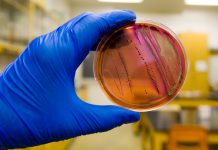Hannah M. Wexler, Professor at the Greater Los Angeles VA Health Care System and UCLA School of Medicine gives a fascinating glimpse into biology research that focuses on the state of health of the gut microbiome
More than two millennia have passed since Hippocrates declared: “Bad digestion is the root of all evil.” In 2018, the importance of the gut flora in human health is at the forefront of scientific and public awareness and the gut microbiome is the new microbial frontier. The state of health of the gut microbiome is associated with GI diseases such as Crohn’s disease and irritable bowel disorders. More surprisingly, the state of the gut microbiome is implicated in obesity, diabetes, heart disease, autism and even psychological disorders such as obsessive-compulsive disorder and depression.
Recently, specific bacteria in the gut microbiota were associated with certain food preferences! Now, virtually every health condition seems to be linked in some way to the gut microbiome. The number of journal articles published per year has skyrocketed. A growing public awareness of the importance of a healthy gut microbiome is the foundation for several very profitable industries that we could not have imagined a decade ago!
Bacteroides fragilis (BF), the organism that we have studied for >30 years, is the most important anaerobic gut pathobiont and the most concentrated reservoir of resistance genes in the human gut microbiome1. In its normal niche, BF is a commensal and has even been implicated in maintaining immune health by stimulating different arms of the T-cell response. Outside its colonic niche, it is an aggressive pathogen. BF is the most common anaerobic isolate in surgical site infections (SSIs) following colorectal surgery2, in wound isolates from combat casualties3, in intraabdominal abscesses and in extra-intestinal infections of intestinal origin. It is the main cause of anaerobic bacteremia and implicated in other serious infections (e.g., brain abscess, soft tissue infections and peritonitis4.)
Our group studies Bacteroides fragilis strains that are responsible for serious, multidrug-resistant clinical infections around the world. We are primarily interested in the transition from benign commensal to an aggressive pathogen. Our questions include: Are certain BF more likely to transition from commensal to pathogen and do specific genes facilitate this transition? Are there genes carried by all BF that are regulated differently when BF is in “virulent” mode? What triggers changes that allow BF to persist in the more aerobic environment of abscesses and the even more, aerobic environment of the blood?
Bacteremia is more common for BF than for any other anaerobe5 (it is the most common anaerobic pathogen identified6) and these infections are responsible for a significant burden of disease in general populations. The BF enterotoxin is a known virulence factor7 but strains enterotoxin-bearing BF do not necessarily cause disease nor do all virulent BF produce enterotoxin.
At this stage, we believe that certain subgroups of BF are more innately virulent than others. We found that BF blood isolates cluster in a highly specific phylogenetic subgroup within the BF species. These strains have never been studied as a distinct group in terms of how they differ from other BF strains. We found that they have unique virulence genes, differentially transcribed genes common to other BF and CRISPR-Cas systems that differ from other BF isolates. CRISPR-Cas systems are considered innate immunity systems in prokaryotes and are important in controlling horizontal gene transfer (HGT), host interactions and can even be involved in cell regulation. Thus, the distinct nature of the BF blood isolates CRISPR-Cas is another indication that BF blood isolates are a group apart.
We also study whether these factors are transferable between strains. Often, a group of genes that contribute to pathogenicity, such as resistance genes and virulence factors, are shared together on large mobile genetic elements. We have identified numerous types of these mobile pathogenicity packages that Bacteroides fragilis has acquired, which contribute to its opportunistic pathogenicity8, 9.
We believe that tolerance and persistence, currently recognised as an alternative mode of evading antimicrobial action10, are important factors in the tenacity of BF. Persisters constitute a serious clinical problem and are thought to be responsible for the recalcitrance of chronic infections11. Data from decades of studying and MIC testing of BF isolates suggests to us that tolerance and/or persistence are important mechanisms that BF uses to survive an antibiotic challenge. Susceptibility studies are not designed to measure tolerance, so this data is almost never published.
In fact, the protocols for susceptibility testing published by the Clinical Laboratory Standards Institute (that, ironically, we helped co-author) specifically instruct the microbiologist reading the test to ignore hazes for MIC determination12. On the other hand, we have noted and written about this problem for decades13. We noted that MICs of BF are often indistinct; sometimes hazes and sometimes small colonies appear beyond the MIC “endpoint”. To estimate just how frequent this phenomenon occurs, we reviewed lab notes from susceptibility studies published over the course of two decades and found that between five and 15% of B. fragilis isolates yielded hazes that persisted well beyond the “MIC endpoint” and we think it likely that most of those hazes represent tolerance or persistence behaviour.
We found that the endpoints of growth isolated from these areas often have indistinct endpoints as well14. This type of growth is presumed to be an indication of tolerant or persistent cells according to recent studies by Balaban15. Almost thirty years ago, we investigated these hazes with two other gram-negative anaerobic bacteria, Fusobacterium and Bilophila wadsworthia and found that they were cell wall deficient forms that would revert to the normal form after two or three passages on drug-free medium. We believe that these phenomena may be responsible for the chronic nature of BF infections, as well as the clinical non-response in some patients to “appropriate” antibiotic therapy.
We know that antimicrobial therapy brings with it a host of unwelcome side effects, including disruption of the healthy gut microbiome and subsequent opportunistic infections such as Clostridium difficile overgrowth. We believe that the proper approach to treating BF infections would be a narrower one that would target specific virulence factors or antimicrobial evasive mechanisms. Our work is designed to identify precise gene targets that will then inform the emerging targeted therapies so that serious BF infections can be treated while preserving the beneficial gut microbiome.
Bibliography and references
1 A.A. Salyers, A. Gupta, and Y. Wang, Human intestinal bacteria as reservoirs for antibiotic resistance genes. Trends Microbiol 12 (2004) 412-416.
2 J.S. Solomkin, J.E. Mazuski, J.S. Bradley, K.A. Rodvold, E.J. Goldstein, E.J. Baron, P.J. O’Neill, A.W. Chow, E.P. Dellinger, S.R. Eachempati, S. Gorbach, M. Hilfiker, A.K. May, A.B. Nathens, R.G. Sawyer, and J.G. Bartlett, Diagnosis and management of complicated intra-abdominal infection in adults and children: guidelines by the Surgical Infection Society and the Infectious Diseases Society of America. Surg. Infect. (Larchmt. ) 11 (2010) 79-109.
3 B.K. White, K. Mende, A.C. Weintrob, M.L. Beckius, W.C. Zera, D. Lu, W. Bradley, D.R. Tribble, E.R. Schnaubelt, and C.K. Murray, Epidemiology and antimicrobial susceptibilities of wound isolates of obligate anaerobes from combat casualties. Diagn. Microbiol. Infect. Dis 84 (2016) 144-150.
4 H.M. Wexler, Bacteroides: the good, the bad, and the nitty-gritty. Clinical Microbiology Reviews 20 (2007) 593-621.
5 K.J. Ryan, Clostridium, Peptostreptococcus, Bacteroides, and Other Anaerobes. in: K.J.R. Ryan, C.G., (Ed.), Sherris Medical Microbiology – An Introduction to Infectious Disease, McGraw Hill, New York, 2004, pp. 309-326.
6 J.T. Ngo, M.D. Parkins, D.B. Gregson, J.D. Pitout, T. Ross, D.L. Church, and K.B. Laupland, Population-based assessment of the incidence, risk factors, and outcomes of anaerobic bloodstream infections. Infection 41 (2013) 41-8.
7 H.M. Wexler, The genus Bacteroides. in: E.Y. Rosenberg, E.F. DeLong, F. Thompson, S. Lory, and E. Stackebrandt, (Eds.), The Prokaryotes: Other major lineages of Bacteria and the Archaea, Springer Verlig, Berlin Heidelberg, 2014, pp. 459-484.
8 F. Husain, Y. Veeranagouda, R. Boente, K. Tang, G. Mulato, and H.M. Wexler, The Ellis Island Effect: A novel mobile element in a multi-drug resistant Bacteroides fragilis clinical isolate includes a mosaic of resistance genes from Gram-positive bacteria. Mobile genetic elements 4 (2014) E29801-E29812.
9 F.T. Husain, Kevin; Yaligara, Veeranagouda; Boente, Renata; Blakely, Garry; Patrick, Sheila; Wexler,H.M., Novel large-scale chromosomal transfer in Bacteroides fragilis contributes to its pangenome and rapid environmental adaptation. Microbial Genomics In press (2017).
10 A. Brauner, O. Fridman, O. Gefen, and N.Q. Balaban, Distinguishing between resistance, tolerance and persistence to antibiotic treatment. Nat Rev Microbiol 14 (2016) 320-30.
11 J. Michiels, B. den Bergh, N. Verstraeten, and J. Michiels, Molecular mechanisms and clinical implications of bacterial persistence. Drug Resistance Updates 29 (2016) 76-89.
12 CLSI, Methods for Antimicrobial Susceptibility Testing of Anaerobic Bacteria; Approved Standard-Eighth Edition. CLSI document M11-A8 (2012).
13 H.M. Wexler, Susceptibility testing of anaerobic bacteria: myth, magic, or method? Clin. Microbiol. Rev 4 (1991) 470-484.
14 L. Pumbwe, A. Chang, R. Smith, and H. Wexler, BmeRABC5 is a multidrug efflux system that can confer metronidazole resistance in Bacteroides fragilis. Microbial drug resistance (Larchmont, N. Y. ) 13 (2007) 96-101.
15 I. Levin-Reisman, I. Ronin, O. Gefen, I. Braniss, N. Shoresh, and N.Q. Balaban, Antibiotic tolerance facilitates the evolution of resistance. Science 355 (2017) 826-830.
Please note: this is a commercial profile
Hannah M. Wexler
Professor
Greater Los Angeles VA Health Care System and UCLA School of Medicine
School of Medicine
More About Stakeholder
-
Gut Microbiome Research at the UCLA School of Medicine/GLAVA HCS
Professor Hannah Wexler discusses her work with Bacteroides fragilis, an important commensal in the gut microbiome but also the most important clinical anaerobic pathogen.
Editor's Recommended Articles
-
Must Read >> Probiotics on poultry gut health research





























